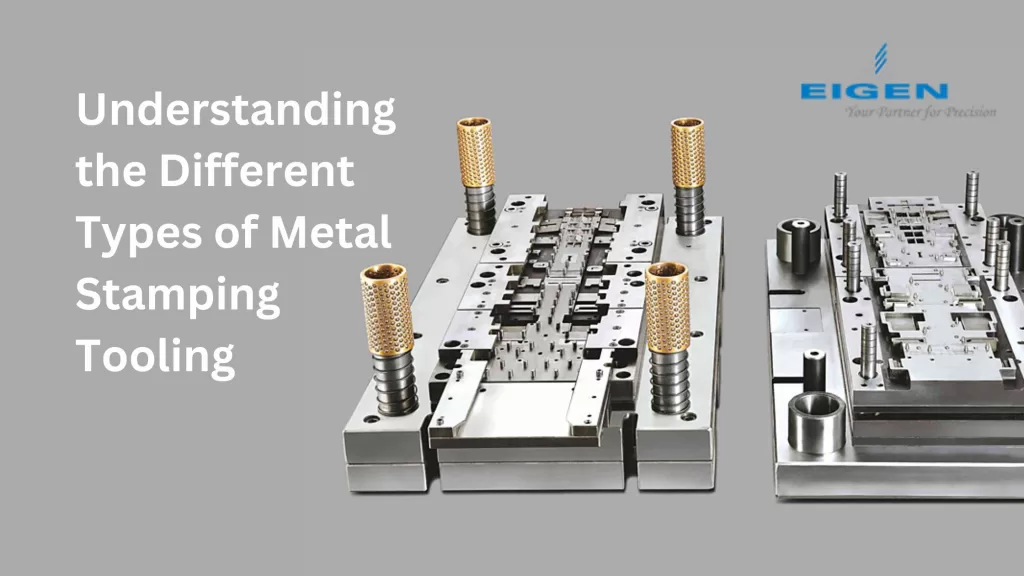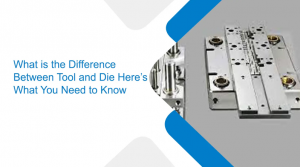Understanding the Different Types of Metal Stamping Tooling
- Metal Stamping |
- Feb 8, 2024

Metal stamping is a sort of production where the metallic sheet is formed into specific metal pieces with cold-forming techniques. There are many wonderful techniques for stamping metals, all of them encompass applying stress and the use of sharp tools. This helps to reduce portions of sheet metallic, make cutouts in metal components, or add textures or markings to steel.
Both two-dimensional pieces and 3-dimensional pieces can be produced from sheets with the use of metal stamping processes. A metal stamping parts supplier uses different types of tools to get precision metal stamping. Read below to understand these tools and various processes involved in metal stamping:
What is a Stamping Die?
Metal sheets can be reduced and fashioned into a unique shape with the usage of a special instrument known as a stamping die. For manufacturing clear and pretty specific designs, these dies often use CAD software programs and analytical equipment. To create the stamping dies, diemakers use the designs. To create pieces out of sheet metallic, the dies are installed in presses. The die’s cutting and forming portions are normally made out of tool steel, a hardenable metal.
Different Types of Metal Stamping Tooling
In the metal stamping process, the most important metal stamping tool and die used are as follows:
- Tool Steel and Die Set Machining: Even for the highly tricky dies, CNC guarantees a better degree of reproducibility and precision. Hard tool metals can be cut with precise tolerances by the usage of gadgets such as wire EDM machines and five-axis CNC machines.
- Secondary Processing: To improve the strength and sturdiness of metal components for certain uses, heat treatment is used. Parts that need precise dimensioning and a high level of surface quality are finished through grinding.
- Wire EDM: This approach makes use of an electrically charged brass wire strand to form metallic substances by way of electrical discharge machining. Small angles and curves are many of the higher complex shapes that wire EDM can cut.
- Metal stamping presses: These are intended to press the die and sheet together.
Classification of Metal Stamping
Here are some of the important classifications of metal stamping:
1.Progressive Die Stamping
Through a sequence of forming dies, each simultaneously operates on the blank that moves the part toward its very last form. Then a strip of metal from a coil is mechanically progressed through progressive die stamping.
After attaining the very last station, the finished product could be extracted from the strip. New metal steel is fed through the primary operation as it enters the modern die’s starting end at the same moment. Pilot pins are pressured into finding holes at each die station by using progressive dies, which allows them to manufacture components that can be consistent.
2.Deep-drawn Metal Stamping
Brass, copper, nickel, and stainless steel are some of the metals that can be worked with using the deep drawing technique. Using the same approach, normally a drawing movement, usually on the same workpiece, this stamping method turns a flat strip of metallic right into a deep-recession item. Occasionally, every operation pushes the component farther again until it achieves the desired depth.
3.Transfer Die Stamping
Transfer die stamping separates the work-in-progress from the steel strip and uses a mechanical delivery machine to carry it among stamping stations. When problematic layout factors like punched holes, cutouts, threads, ribs, or knurls could be hampered through the steel strip, this technique will be beneficial. It can also be carried out on gadgets that progressive die stamping can’t take care of due to the fact to their length.
4.Multi-slide Metal Stamping
Parts having a couple of bends or intricate sections are suited for multi-slide steel stamping. Multiple sections of the workpiece are simultaneously formed through four or multi-slide stamping. Coils and different gadgets with a non-stop bend are usually made with the use of this method.
Different Types of Metal Stamping Machines
There are various types of metallic stamping machines, and each is made for a selected need. Here are the most commonly used five metal stamping machines:
- Mechanical Presses: For steel stamping, mechanical presses are often applied. They produce force and carry out stamping operations using a mechanical system, normally a crankshaft and flywheel.
- Hydraulic Presses: The hydraulic cylinders in hydraulic presses provide the pressure needed to imprint metal. Because of their excellent pressure output, they are regularly used in deep drawing and forming processes.
- Transfer Presses: For problematic stamping techniques that need several phases, transfer presses are used. The metal is transferred between numerous stations in the machine using a switch mechanism.
- Stamping Punch Presses: Punch presses are multipurpose tools that are used in coining, piercing, and blanking among different metalworking processes.
- Coining Presses: Coining presses are used to make coins and other flat objects with complex designs that require high precision.
Final thoughts
In metal stamping both the tool and die design must make sure there is a proper material flow. For adequate clearance for metal sheets and appropriate support for every part during metal stamping the right tools and designs are important. Choose the right metal stamping parts supplier and make your metal stamping process simple and efficient.
Ujjwal handles crucial roles like AGM Marketing, researcher, and is an author for KDDL – Eigen. He currently works with Eigen for implementing proven techniques and strategies for marketing plans on online and offline platforms. An expert in efficiently executing SEO, SEM, email marketing, social media marketing, PR marketing, Print campaigns, etc. Ujjwal has coordinated an efficient marketing team on various creative campaigns and programmatic buying to support various digital cross-promotion efforts. Implement efficient search optimization strategies with the help of collateral material and metrics.
In his former years, Ujjwal has years of experience in a managerial role for several reputed companies. His years of experience combined with the flair of writing help him come up with result oriented strategies for Eigen.




